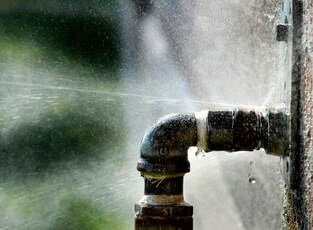Guide To Water Leak Detection At Home
Guide To Water Leak Detection At Home
Blog Article
Are you currently on the lookout for advice around Locating water leaks?

Early detection of dripping water lines can mitigate a possible catastrophe. Some small water leakages may not be noticeable.
1. Examine the Water Meter
Every home has a water meter. Examining it is a surefire manner in which aids you uncover leakages. For beginners, shut off all the water resources. Guarantee no person will purge, use the tap, shower, run the cleaning machine or dish washer. From there, go to the meter and watch if it will certainly transform. Because no person is using it, there ought to be no movements. If it relocates, that shows a fast-moving leak. Also, if you discover no changes, wait a hr or two and also examine back again. This means you may have a slow leakage that can even be below ground.
2. Examine Water Intake
If you detect sudden adjustments, despite your consumption being the same, it suggests that you have leakages in your plumbing system. A sudden spike in your expense indicates a fast-moving leakage.
At the same time, a consistent boost monthly, despite the very same behaviors, shows you have a slow leak that's likewise gradually intensifying. Call a plumber to extensively examine your home, particularly if you really feel a cozy area on your floor with piping below.
3. Do a Food Coloring Test
When it comes to water consumption, 30% comes from bathrooms. If the shade somehow infiltrates your bowl during that time without flushing, there's a leakage in between the tank and bowl.
4. Asses Outside Lines
Do not neglect to examine your outside water lines also. Examination spigots by affixing a yard pipe. Ought to water leak out of the link, you have a loosened rubber gasket. Change this and also make certain all connections are tight. It will certainly assist get it professionally analyzed and kept annually if you've obtained a lawn sprinkler system. One little leakage can throw away lots of water and increase your water expense.
5. Analyze the circumstance and also evaluate
House owners should make it a behavior to check under the sink counters and also also inside cupboards for any kind of bad odor or mold development. These two red flags suggest a leak so prompt attention is called for. Doing regular assessments, even bi-annually, can conserve you from a significant problem.
More importantly, if you understand your house is already old, keep a watchful eye on your heating systems, hose pipes, pipes and so on. Look for discolorations and compromising as the majority of pipes as well as devices have a life span. They will also normally weaken due to tear as well as wear. Do not wait for it to escalate if you believe dripping water lines in your plumbing system. Call an expert plumber right now so you don't end up with a terrible mess in your house.
Early detection of leaking water lines can alleviate a potential catastrophe. Some small water leakages might not be visible. Examining it is a surefire method that aids you discover leaks. One small leakage can waste loads of water and spike your water bill.
If you suspect leaking water lines in your plumbing system, do not wait for it to rise.
WARNING SIGNS OF WATER LEAKAGE BEHIND THE WALL
PERSISTENT MUSTY ODORS
As water slowly drips from a leaky pipe inside the wall, flooring and sheetrock stay damp and develop an odor similar to wet cardboard. It generates a musty smell that can help you find hidden leaks.
MOLD IN UNUSUAL AREAS
Mold usually grows in wet areas like kitchens, baths and laundry rooms. If you spot the stuff on walls or baseboards in other rooms of the house, it’s a good indicator of undetected water leaks.
STAINS THAT GROW
When mold thrives around a leaky pipe, it sometimes takes hold on the inside surface of the affected wall. A growing stain on otherwise clean sheetrock is often your sign of a hidden plumbing problem.
PEELING OR BUBBLING WALLPAPER / PAINT
This clue is easy to miss in rooms that don’t get much use. When you see wallpaper separating along seams or paint bubbling or flaking off the wall, blame sheetrock that stays wet because of an undetected leak.
BUCKLED CEILINGS AND STAINED FLOORS
If ceilings or floors in bathrooms, kitchens or laundry areas develop structural problems, don’t rule out constant damp inside the walls. Wet sheetrock can affect adjacent framing, flooring and ceilings.
https://www.servicemasterbyzaba.com/blog/how-to-detect-water-leakage-in-walls/

Do you like reading up on Finding hidden leaks? Give a comment down below. We will be pleased to see your responses about this post. We hope that you visit us again in the near future. So long as you appreciated our article please make sure you remember to share it. I am grateful for your time. Kindly come by our blog back soon.
Report this page